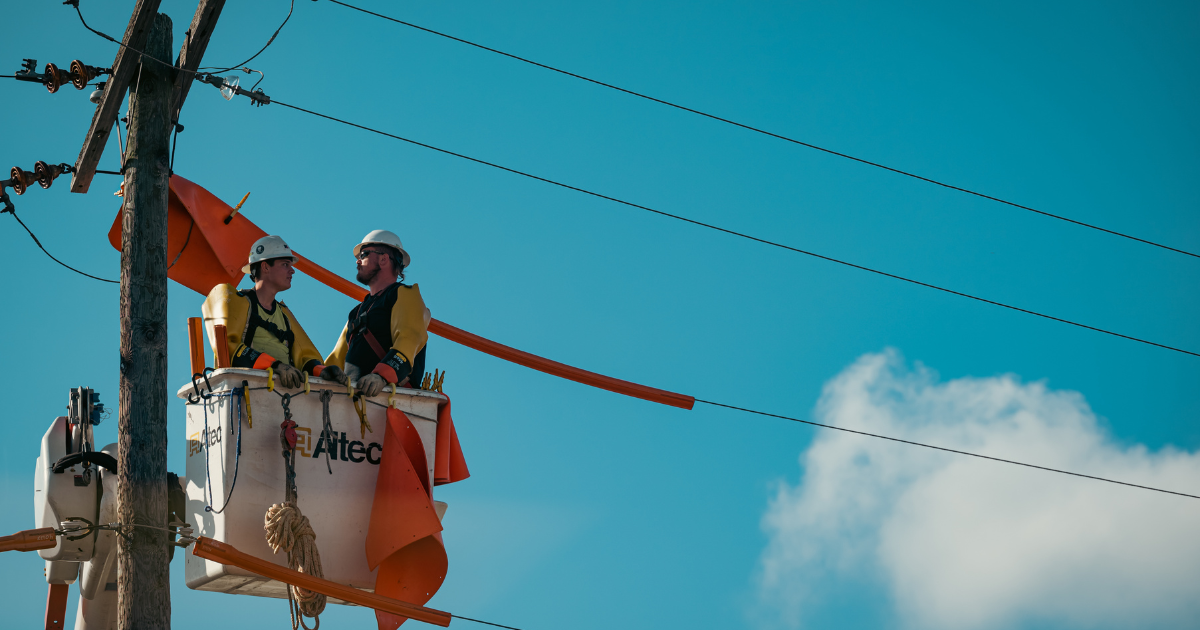


The story of distributed energy resources (DERs) is often told in headlines about growth: more solar arrays, more batteries, more interconnections every year. But inside utilities, the story looks different.
It’s a story of bottlenecks. Project managers buried in interconnection requests, SCADA engineers reworking custom diagrams, telecom teams stretched thin trying to secure hundreds of one-off connections and cybersecurity signing off on configurations they don’t fully trust.
Commissioning a single DER site still takes months, sometimes years, not because the hardware is complex, but because every site feels like a new invention.
I know this pain firsthand, but I also know it doesn’t have to be this way. The utility community already has the tools, standards, and operational practices to make DER onboarding predictable. What we lack is a consistent playbook.
This post lays out a standardized approach utilities can use to cut delays, reduce operational strain, and give DER developers a clear, repeatable path to commissioning.
Grid interconnection is supposed to be a process. In practice, it often feels like a patchwork.
The result is predictable: delays. A median of five years from interconnection request to project completion, according to national data. Even when projects move faster, the internal cost to utilities in staff time, truck rolls, and coordination overhead is unsustainable.
A recent Deloitte study, Funding the Growth in the U.S. Power Sector, makes it clear: utilities are facing rising demand, escalating complexity, and tighter financial pressure fast.
The U.S. grid is expected to require up to $1.4 trillion in capital investment between 2025 and 2030, with similar levels projected through 2050.
That level of funding would be challenging in a stable market, but it comes at a time when utilities are also managing rising costs from grid complexity, extreme weather, aging infrastructure, supply-chain inflation, higher financing costs, and tightening regulatory requirements.
At the same time, traditional funding tools like rate cases, debt, and equity are showing strain. Utilities are beginning to explore alternative funding models, but more importantly, many are turning to operational efficiency and digital technologies to maximize the value of the resources they already have.
This creates a direct link between internal processes, including how DERs are commissioned, and the broader financial health of the utility.
What this means for DER commissioning is that every delay, every ad-hoc network design, and every redundant communication path is more than an internal headache. It represents real financial risk in a world where capital is constrained and regulators are demanding cost discipline.
Utilities that continue to rely on inefficient billing, manual handoffs, insecure or custom communication networks, and reactive monitoring will carry higher operational costs and face greater financing burdens.
By contrast, systems that standardize hardware, automate workflows, and ensure secure, monitored, and reliable communication channels are no longer optional. They have become essential tools for staying competitive, resilient, and financeable in the decades ahead.
Considering this backdrop, a standardized utility playbook for DER commissioning isn’t just about speeds and internal KPIs. It’s part of how a utility must adapt structurally to survive (and thrive) in the investment storm ahead.
Utilities don’t need more software platforms or new acronyms. They need standardization.
In other words:
Standardization doesn’t eliminate engineering judgment, but it moves repeatable tasks out of the ad-hoc column and into the system column. It allows utilities to focus on exceptions, not the baseline.
And it gives DER developers something they’ve been asking for all along: a clear, predictable process.
Commissioning delays often start before the first packet of SCADA data moves. They start at procurement.
When each developer is responsible for sourcing their own hardware, be it RTUs, modems, industrial PCs or battery backups, utilities inherit a zoo of configurations. Engineering reviews multiply, drawings get revised and cyber teams have to vet devices they’ve never seen before.
The fix is straightforward: adopt a utility-approved edge design. A pre-vetted cabinet with standard components, tested and configured to utility specifications. Developers fund the purchase, but the utility retains control of the design and root keys.
Loopback’s PowerWatch Edge is one example of this approach. It combines RTU, modem, UPS, and monitoring hardware in a NEMA 4X-rated enclosure, pre-configured for plug-and-play deployment. The point isn’t the brand, it’s the discipline of having one standard for all sites.
If you ask a SCADA engineer what slows down DER integration, they’ll often point to communications. Too many tunnels, too many carrier relationships and too many variables.
In the old way, every DER site meant building a new VPN connection. Multiply that by hundreds of projects, and you get a fragile, unmanageable network.
The better way is one secure overlay. One or two tunnels into a utility-controlled backbone, with encrypted connections out to all DER sites. Private cellular networks, dual-carrier redundancy, and encrypted VPN overlays (like DMVPN) make this possible today without exposing traffic to the public internet.
In practice, this means a SCADA engineer configures routing once, then scales infinitely as new sites come online.
Ask a DER project manager to map out their process, and you’ll see a mess of boxes and arrows, many undocumented and many reliant on memory.
Twenty-seven steps across five departments is not unusual. Each step is a chance for a missed email, a dropped handoff, or a delay.
The playbook approach is to digitize the workflow. A system where site validation, metering, SCADA point mapping, and telecom provisioning are converted into work tickets with clear ownership, deadlines, and escalation rules.
This isn’t about adding “DER software” for its own sake. It’s about building interconnection software that utilities actually control and that reflects their internal processes.
Commissioning doesn’t end when the site goes live. Too often, utilities discover communication issues only when someone calls to complain.
A standardized playbook includes proactive monitoring. Not just SCADA points, but the health of the communication path itself: signal strength, tunnel status, AC power loss, tamper detection.
The goal is to catch issues before they become outages and to resolve them without truck rolls. Remote firmware updates, overnight replacement hardware, and SLA-based escalation keep the system running with less hands-on effort.
When utilities adopt this four-part playbook, the impact is measurable:
The deeper benefit is trust. Engineering, telecom, cyber, and operations teams stop pointing fingers and start working from the same playbook. Not to mention that developers know what to expect and regulators see a utility actively managing risk and enabling clean energy growth.
DER growth is not slowing down. Even in uncertain economic and political climates, the demand for renewable integration and grid modernization continues, and will continue to grow in the coming years.
Utilities that try to manage this with piecemeal approaches will continue to feel the strain. Utilities that adopt standardized, end-to-end playbooks will be positioned to handle the growth with confidence.
Standardization isn’t glamorous. It doesn’t make headlines. But it’s the foundation of scalable grid management, and it’s the only way to align SCADA, telecom, cyber, and metering teams around a common goal.
If your teams are tired of reinventing the wheel on every interconnection, it’s time to consider a playbook approach.
Loopback Systems built PowerWatch around these principles: standardized hardware, secure communications, automated workflows, and proactive monitoring. This is how we help utilities move from ad-hoc firefighting to scalable, predictable operations.
If you’d like to see how utilities are already reducing commissioning delays with this approach, reach out to Loopback Systems or feel free to connect on Linkedin.
Keep the conversation going. Explore more of our in-depth articles on grid modernization, DER integration, and the future of energy.
.png)
Today’s utility engineers must connect hundreds of small, independently owned devices (each with their own hardware, firmware, and communications preferences) into the same control environment.


Distributed Energy Resources (DERs) are reshaping the electric grid, adding flexibility, enabling renewable integration and decentralizing generation. But every new solar array, battery system, or a microgrid system also opens another doorway into the utility network.

Got a concept you want to work through? Whether it's standardizing DER processes, optimizing equipment choices, or streamlining interconnection workflows, we’ve helped utilities and developers solve these challenges.
Let’s start with a free 30-minute consultation—no pressure, just a conversation about your needs.